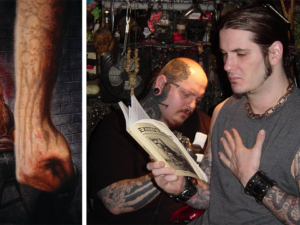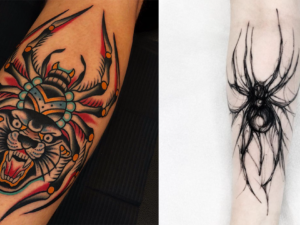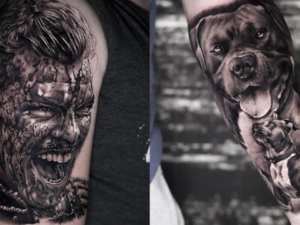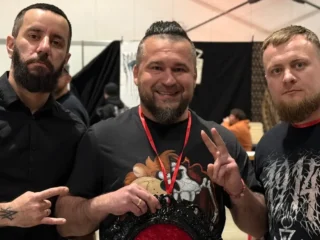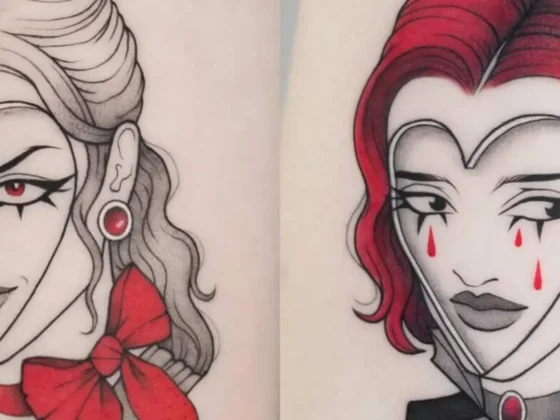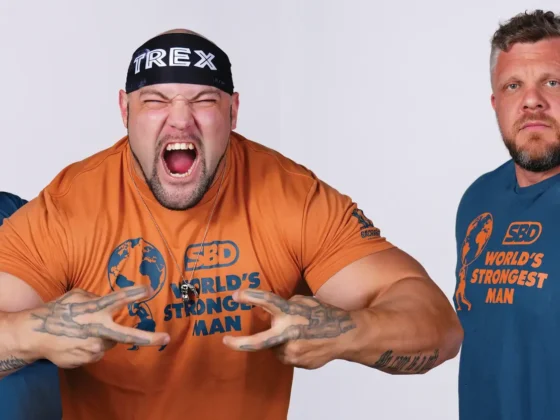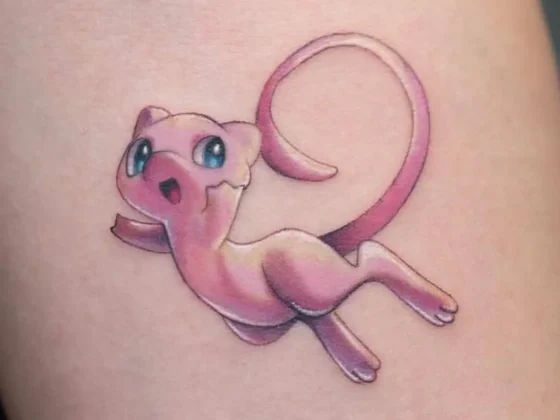Inked Mag
December 18th, 2018
INKED Talks with the Creator of the New “Smart Tattoo” that Can Indicate When You Need to Reapply Sunscreen
“I call them solar freckles because they’re like invisible freckles that are powered by sunshine,” Carson Bruns said.
The University of Colorado is creating a new “smart tattoo.” The biomedically engineered tattoo ink, being sensitive to UV light and heat, appears when the skin is overexposed to the sun’s radiations.
Not only is the University of Colorado’s Mechanical Engineering team working on a tattoo that will be able to tell you when you have to apply sunscreen, but they are also in the works to engineer ink that can help identify a sickness or shift in blood makeup, including if your blood sugar is low.

Carson Bruns, an assistant professor of Mechanical Engineering with the ATLAS Institute at the University of Colorado, is leading the team. Bruns’s creation has the power to revolutionize medicine, health, as well as the artform of tattooing.
Bruns talks to INKED, to tell us about the progress of the “smart tattoo.”
“I have always been interested in both art and science. My favorite type of art is tattooing and my favorite type of science is nanotechnology,” Bruns said. “When I had an opportunity to start a new research program, I thought it would be really fun and interesting to try and put the two together.”

The UV-sensitive tattoo contains a color-changing dye that can appear or disappear, depending on what it is exposed to… including potentially harmful UV rays.
“When you think about what a tattoo is, it’s just a bunch of particles that sit in your skin. Our thought is, what if we use nanotechnology to give these particles some function?”
Bruns explained that the tattoo ink acts as a real-time indicator of your skin’s UV exposure. The “smart ink” is almost invisible, “but turns blue when it is exposed to UV light. It therefore acts as a naked-eye indicator of your skin’s UV exposure.”
“Basically, if you can see the tattoo, it means you’re overexposed to sunlight and you are at an increased risk of getting sunburn and skin cancer. If you put sunscreen on, it’ll disappear and you’ll know you’re safe,” Bruns said.
He added, “Hopefully this kind of tattoo can help remind people to wear sunscreen.”

Bruns and his team are also working on tattoos that could help doctors diagnose illnesses and identify changes in people’s blood chemistry.
“We have also made tattoo inks that disappear when heated above a certain temperature. By placing these different temperature-changing inks side-by-side, we could tattoo a temperature scale that would act as an in-skin thermometer. If we can set the color-change temperatures of these inks near human body temperature – say 96, 98, and 100 F – then in principle, your tattoo could give you information about your body temperature,” Bruns said.
In Bruns’ lab, the researchers use a technology called a “microcapsule” to make both of these color-changing inks work.

“A microcapsule is a tiny hollow particle with a protective outer shell. By replacing tattoo pigment particles with microcapsules, we can introduce new materials (like color-changing dyes) into tattoo inks while keeping them insulated from the body with that protective shell,” Bruns said.
The UV-sensitive tattoo will revolutionize health for the tattooed community, in reducing the number of skin-cancer cases.
“Millions of cases of preventable skin cancer are treated every year,” Bruns said. “I hope that the UV-sensitive tattoo will help us reduce the number of those cases by reminding people when their skin is exposed to unsafe levels of UV light.”
Bruns explained that the UV-sensitive tattoos will not be available to anyone for a long time “because we have lots of safety testing to do first.”
While it may be years before the ink is approved by the Food and Drug Administration, and to then hit tattoo shops, Dr. Bruns has volunteered himself to be the first to test out the “smart tattoo,” giving himself a couple of blue solar freckles on his arm, “to see if it works.”

Bruns’ work with traditional tattoo ink, includes: a full sleeve, a full chest and stomach piece, and a colorful leg sleeve. Bruns said, “Most of them are nerdy science tattoos.”
“Our biggest concern right now is making sure that we’re not poisoning anybody with these tattoos,” he said.
Bruns is confident people will one day be able to get a tattoo with “important superpowers.”

“We want to make tattoos that will allow you to, for example, sense things that you can’t currently sense,” Bruns said. “Sometimes I joke that we want to make tattoos that give you superpowers.”
These tech tattoos are “going to enable people to be healthier and more self-expressive,” he said.
One day, Bruns hopes his tattoo ink could detect a diabetic’s blood glucose level or even someone’s blood-alcohol level.
As far as blacklight tattoos, Bruns said, “the same blacklight lamps that make those glowing tattoos light up would also activate the color change in our tattoo inks.”

For the future of the tech tattoo, Bruns hopes ”that we will be able to make “smart tattoos” in the future that can also give us information about what’s going on inside of our body, such as the sugar or alcohol levels in our blood,” he said.
“More generally, I hope that smart tattoos will help people stay healthy and more informed about their body, while also giving people new ways to express themselves creatively.”
Editor's Picks
Paul Booth Illustrates Cover for Pantera Graphic Novel
The revered tattoo artist created a cover for a graphic novel celebrating the 30th anniversary of “Vulgar Display of Power”
Scary Spider Tattoos
Spiders are terrifying, yet for some reason people sure do love to get tattoos of them


